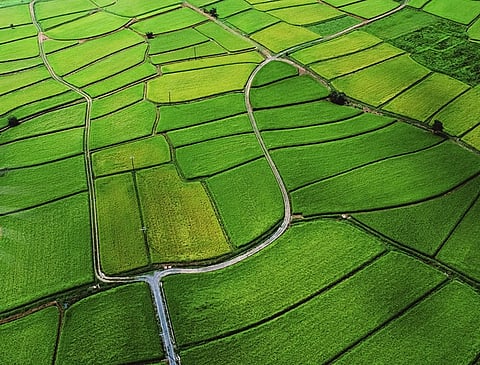Soil Salinity in the Middle East is Manageable, Empirical Research Suggests
Among the many issues hindering food security in the Middle East, soil salinity is often left out of the solutions framework. That omission is owed not to the lack of initiative but to the severity of the problem.
Globally, soils spanning over 1,100 million hectares of land are affected by salinity, the impact of which manifests through agricultural distress, excessive irrigation, and food scarcity.
Such ill effects are more pronounced in the Middle East, where at least 20 million hectares of land is said to be affected by soil salinity. One could wonder: What makes soil salinity a particularly pressing issue in the Middle East?
Soil salinity occurs under all climatic conditions, so the regional arid/semi-arid climate is not the sole determinant. However, when accompanied by human actions such as deforestation and unsustainable urbanization, arid regions become more prone to soil salinity.
Assess, Reduce, Replace and then Carbon Offset
Without sufficient, reliable rainfall to leach the salts from the soil, salinity becomes more entrenched. As a result, this phenomenon has long eluded actionable solutions. That is about to change, thanks to the emergence of innovative air-permeable and watertight material, Breathable Sand.
Circumventing soil salinity; achieving optimal yield
In an empirical study conducted by researchers from the Rechsand Science & Technology Group, Breathable Sand has returned outstanding results, including but not limited to the absence of salt intrusion, optimal agricultural yield, and considerable water savings.
Breathable Sand has garnered attention from the scientific community because of its low-impact, cost-effective production — it is developed by modifying and coating typical desert sand to induce air permeability and water-repellent characteristics.
In agricultural applications, this solution leads to prolonged moisture retention, as well as an effective supply of nutrients to the roots — all contributing to optimal yield with reduced irrigation.
In Zhejiang Province of China, researchers attempted to grow hybrid rice in three adjacent plots: One without a liner, one with a geotextile liner, and one with approximately three centimetres of Breathable Sand.
Over the summer of 2019, researchers monitored water use, root and leaf development, and rice quality, among other signs. No salt intrusion in the root zone was observed in the lot with the Breathable Sand liner, even after a particular time had elapsed.
Additionally, that lot used about 30% less water compared to adjacent ones without the solution.
On the yield front, Breathable Sand-based cultivation resulted in produce which was superior to others in terms of grain weight, grain count, and maturity rates. Four years on, researchers continue to record the absence of salt intrusion and plant depression.
Research implications for the Middle East
About 30% reduction in water usage with only three centimetres of Breathable Sand application, along with the solution's long lifespan, has great implications for the Middle East’s food security prospects.
That is because the region also grapples with acute water scarcity and limited groundwater resources. Needless to say, agricultural distress has translated to a trade deficit, with nearly 90% of food being imported.
Attempts to localize food production have strained water infrastructure, as soil salinity demands excessive irrigation. While tech-heavy methods such as aquaponics and aeroponics have shown glimpses of promise, they accompany high initial and operating costs and are limited in scale.
Breathable Sand, on the other hand, can maximize agricultural output with minimal water input, as evident from the research findings.
It is also easily accessible to practitioners across the socioeconomic spectrum — farming communities can leverage it to develop self-sufficiency in terms of food and water; home gardeners and residential communities can achieve water-wise landscaping; and institutions can resolutely pursue reforestation and desert greening initiatives through permaculture and food forest models.
It is safe to say that such concerted efforts have cascading effects on regional biodiversity, ecological preservation, food and water security, the balance of trade, and overall socioeconomic growth.
The research findings are particularly topical today when the region is under the sustainability spotlight owing to the impending UAE-hosted COP28.
Globally, policymakers are of an opinion that sustainability and climate actions must be perceived and pursued holistically by reconciling multiple objectives.
Breathable Sand, uniquely positioned at the intersection of water, food, and environmental responsibility, corresponds to that priority.
While circumventing deeply entrenched problems such as soil salinity, it can unlock positive outcomes on several fronts — food, water, economy, and environment — that are an existential imperative.
In the Middle East, where robust top-down policies have led to remarkable outcomes in recent years, there is no reason to believe that soil salinity cannot be addressed, especially with promising solutions such as Breathable Sand now accompanying empirical evidence.
Read More: Circa Biotech Wins AgriTech Innovator of the Year Award


